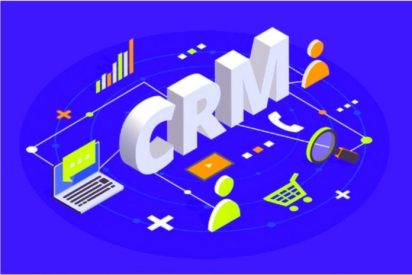With A Modern CRM, Companies Can Respond Better To Their Customers And Thus Survive In The Market In The Long Term.
Through the integration of a CRM (Customer Relationship Management System) and the potential synergy effects such as faster processing of inquiries, new trends are also conceivable. Entirely based on the mobile movement and the option of receiving “push” notifications in real-time, it is possible that a message could be sent to sales as soon as the product cycle is coming to an end and a new order is expected from the customer. This expectation would be calculated by CRM based on the customer’s previous purchase statistics and made available to sales; after that, proposal proposals can be generated and forwarded directly to the customer via the collaborative e-mail system.
Key Point
Customer relationship management is a central linchpin for the management of customer relationships. However, there are also solutions on the market that go one step further and support manufacturing companies in managing business relationships with suppliers and other business partners. Efficiency in communication and maintaining relationships makes all the difference in practice and often determines success in day-to-day business. With the help of modern IT tools and future-oriented approaches, companies can make their communication “barrier-free” and work together with their business partners on a standard central platform. Are the CRM system, the communication solution, and the service management integrated into the leading company software? There is also additional potential and advantages for comprehensive process networking—a collaborative interaction of several departments and the associated continuous flow of information and seamless traceability. Companies are often faced with the question of which solutions can be used to increase communicative efficiency.
Relationship Management As A Unique Selling Point
There is an extraordinary variety of products in Germany, making it difficult for many companies with similar effects to stand out. It is more important to develop unique selling points that put your offer in the foreground to generate a competitive advantage. The wheel does not necessarily have to be reinvented. Good relationship management with customers and suppliers can also serve as a unique selling point. The CRM is a strategic approach for the complete planning, control, and implementation of all interactive processes.
CRM aims to establish a personalized relationship with customers and suppliers in communication and service to generate this unique selling point. The CRM goes through two instances.
The First Instance: Data Processing
Here, the CRM serves for a more efficient collection, processing, evaluation, and use of customer data, which then serve as a basis in sales to respond more effectively to the needs of the customer. Numerous functions, such as evaluating customer satisfaction, help sales to understand what the customer values.
Data processing can take place in two ways. On the one hand, through an external CRM solution with its database and thus processes and makes the data available. However, it should be noted that unless complex interfaces and automatisms have been created, the data is maintained manually.
On the other hand, a CRM solution is a fully integrated CRM in the system. Suppose the CRM is integrated into an existing system, synergies that harbor even more significant potential. Due to existing interactions with other areas and the exchange of information almost in real-time, thanks to the shared database, any customer-specific data can be processed in the second in which it entered the system. At the same time, non-integrated CRM solutions entail importing and possibly cleaning up the data.
The Second Instance: Contact With Customers And Suppliers
A few years ago, e-mail and telephone conferences were used to establish a connection. Today’s trend is towards the use of so-called collaboration tools and social business tools, which offer a more efficient communication exchange. However, the classic email format is not intended to serve its purpose. The trend here is upgrading and including email in new, modern tools, for example, through cloud-based hosting for business e-mails and instant messaging as a service. Well-known applications are Yammer, Jive, or MS Sharepoint.
If you combine the advantages of an integrated CRM and the trends of the “new” communication, appointments and resources can be set via the integrated email client, immediately visible in the CRM.
Thanks to the advantages and possibilities that modern CRM offers, companies can respond better to their customers and thus survive in the market in the long term.
Also Read: The Most Critical CRM Trends For 2021

